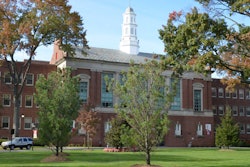MADISON Wis. – University of Wisconsin System President Kevin Reilly is challenging campuses to find new ways to graduate more students as part of a long-range plan to increase the number of degree-holders in the state.
Dr. Reilly said he wants the system of 13 four-year universities and 13 two-year colleges to increase the number of degrees issued by 30 percent by 2025. That would bump the number of graduates up from the current 26,000 per year to 33,700 and produce 80,000 more graduates in the next 15 years, he said.
The system must act, Reilly said, for the good of the state’s economic future.
With more degrees comes higher personal income and a better quality of life, Reilly said, echoing a theme that has been part of his message in his tenure leading the system since 2004. He is expected to present his goal Thursday to the Board of Regents during a meeting in Fond du Lac.
Achieving the goal would increase the percentage of Wisconsin adults with college degrees from 34 percent to 50 percent, a level currently enjoyed in top-performing countries such as Canada and Japan, he said.
To get there, campuses must improve graduation and retention rates, embrace new course delivery methods and receive additional state investment, he said. Some will expand enrollment, but key growth will come from recruiting a deeper cut of underrepresented populations such as minorities and low-income students and helping them finish, he said.
Reilly said campuses must also appeal to more working adults who want to finish degrees by giving credit for what they have learned already and offering more compressed courses and more distance education programs.
“The UW must enroll more of these new students and we must find ways to help all our students graduate in larger numbers in a timely fashion,” he said. “We will provide each campus with the flexibility to adopt innovative approaches, and they will all be focused on one result providing more graduates for Wisconsin while preserving the high quality of a UW degree.”
Reilly said the system’s retention and graduation rates were already above the national average, with 65 percent of students graduating within six years, but still have room for improvement.
Failing to act, Reilly warned, would likely cause a drop in the number of UW graduates over time because of shifting demographics and shrinking numbers of high school students.
But the call to produce more graduates might irritate some UW faculty and staff, who are being furloughed to help balance the state budget while already teaching a record 179,000 students. Like other workers, they had a planned 2 percent raise taken away, and the furloughs will amount to a 3 percent pay cut for two straight years.
Bryan Kennedy, president of AFT-Wisconsin and an instructor at UW-Milwaukee, said the plan must involve hiring additional faculty and staff to teach the influx of students. He said class sizes would otherwise be too big, course sections would not be available, and employees who are already overworked would take on too much.
“I think we’re all willing to help him move ahead with these goals, but let us come up with ideas and suggestions for how best to make it happen without overly increasing our workload,” he said.
Reilly agreed the plan would require more teachers, but noted that new students would mean more tuition revenue. He said the regents in May would hear from a consultant on ways to “strategically finance” the plans, which he said must include adequate compensation for employees and more administrative flexibility.
Reilly said some of the plans would be incorporated into the system’s proposal for the 2011-13 state budget, which will be approved by the regents in August. He has created a commission that is studying staff salaries, which in many cases lag behind those at comparable universities, as part of an effort to close the gaps.
What’s more, he said the system “may be on the verge” of winning new flexibility to adopt more efficient business practices. He did not elaborate, but the system has said that loosening state rules on its purchasing, building projects and other administrative areas would save millions that could be used to support core education programs.


















